Hello everyone! How are you? This is Mineko. I’ve been spending every day this summer in good health, with no summer fatigue. The Olympic Games were held in Japan this year, but staying at home is still very important. I’ve been enjoying summer as much as possible visiting nearby areas while taking all the necessary precautions.
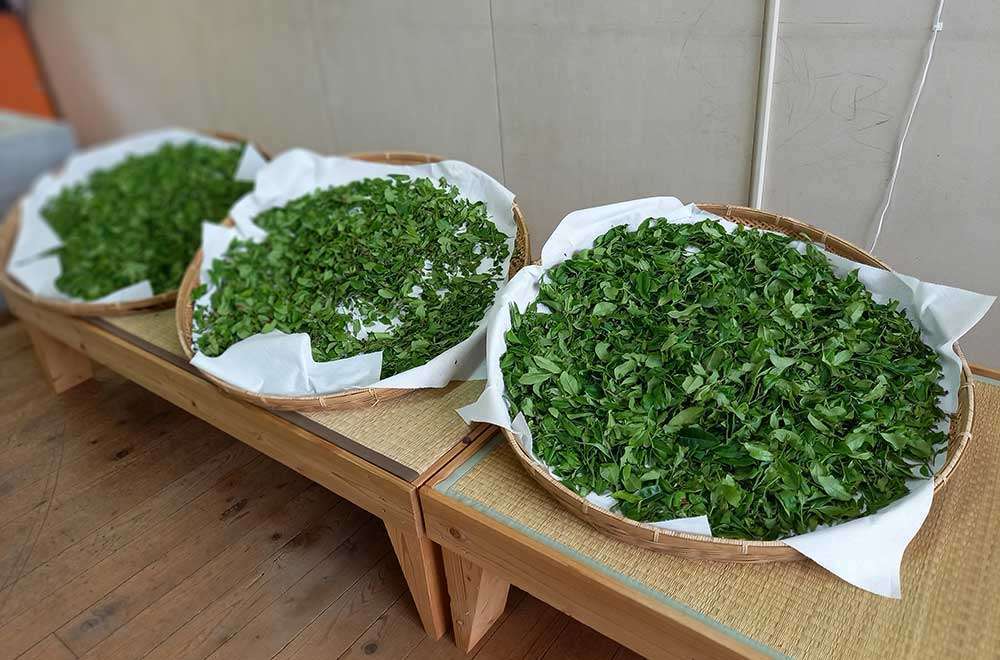
The other day, my family and I went for a tea-making experience workshop.
By making tea, I don't mean “to brew” but “to process” here. We were all very excited to go to Yamazoe, Nara Prefecture, the village known for its tea cultivation. It is a neighboring village within a 30-minute drive from Nabari of Mie Prefecture, where we live, and is also adjacent to Nara City.
Let the tea-making begin!
The workshop was held at the facility called “Kasuga Garden” in Yamazoe.
When we arrived at the venue, we were fascinated to see the tea leaves prepared for us. My son and husband were both full of enthusiasm. But before we started to process them, we had to learn about tea first.

Different types of tea can be made depending on how it’s processed. For example, we learned that Shincha (newly-picked tea), Gyokuro (refined green tea), Oolong tea (traditional Chinese tea), and Hojicha (roasted green tea) can be all made from the same tea leaves. I was shocked because I thought every kind of tea was made from different leaves.
At this tea-making workshop, we got a chance to hand-process Japanese tea leaves into black tea. But black tea!? Not green tea? Is that possible?
On that day, we experienced:
- Rolling
- Fermentation
- Drying
- Tasting
Although this workshop usually starts with tea leaf picking, that process was already done since it was forecast to be rainy that day. (It turned out to be sunny that day, though!).
Rolling
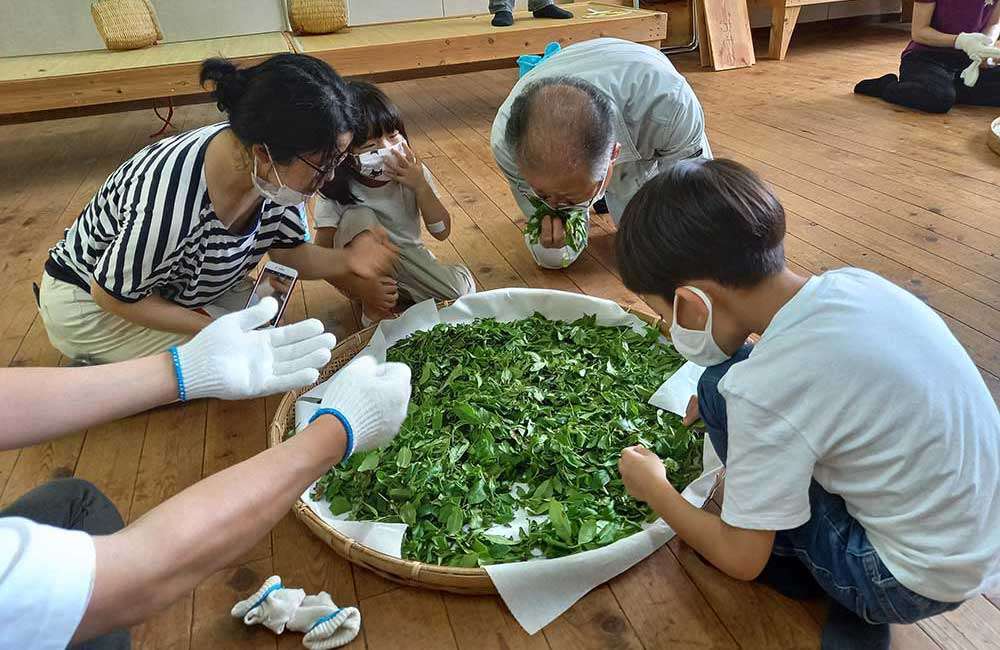
The first step of the day was rolling and kneading the tea leaves. We worked in 2 teams with 4 members. We wrapped the leaves with a cloth and kneaded them to release the moisture. The 4 of each team took turns to squeeze and press the “tea leaf ball” by hand using all our strength. Each team had a different rolling style, so we would have 2 kinds of finished products with different tastes.
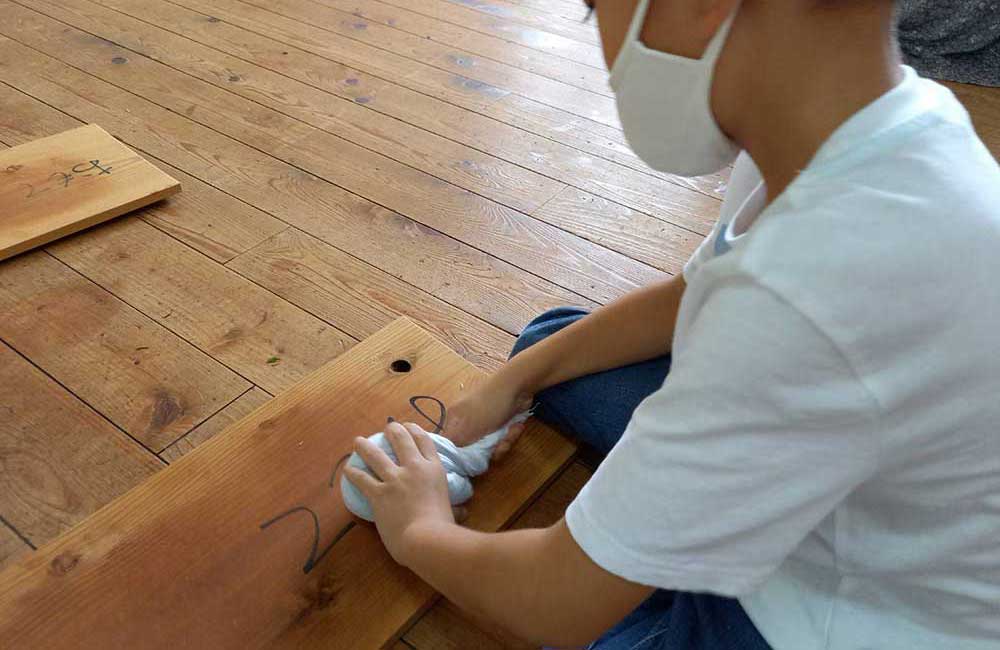 “Knead it with all your heart, so the tea will taste better!” the instructor said.
“Knead it with all your heart, so the tea will taste better!” the instructor said.
We rolled, squeezed, and pressed for more than an hour…I was so not used to doing this kind of work. By the time this process was finished, I was drenched in sweat, and my hands got so numb!
Fermentation
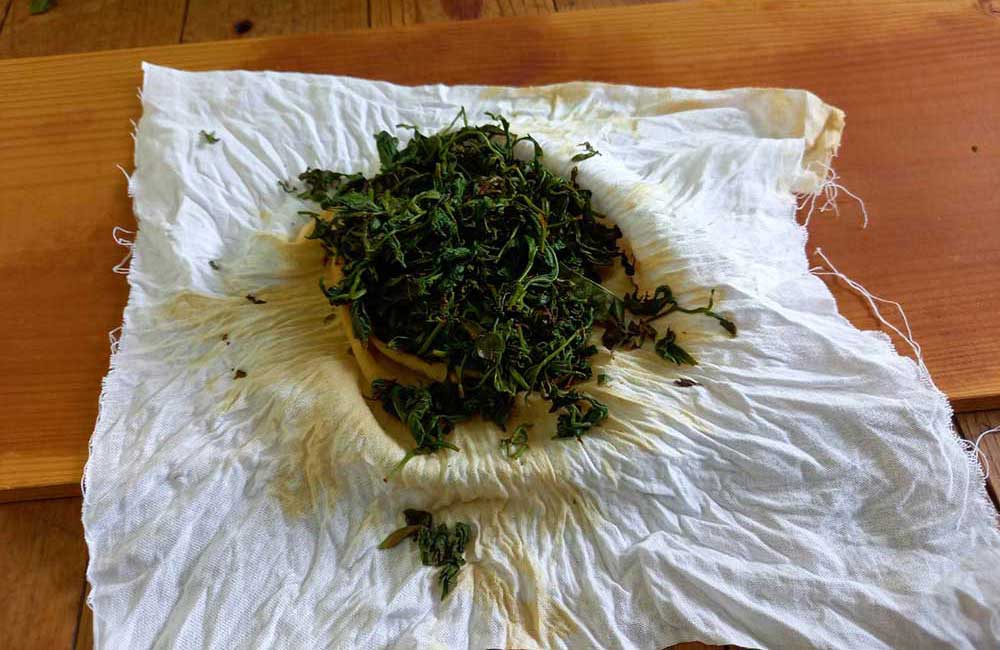
Now that we had squeezed the water out to find the tea leaves softened, it was time for the next step. We put a cloth over our withered leaves and let them ferment or oxidate. Since it was a hot summer day, we were advised leaving the tea outside for about an hour would be enough. We ate lunch during this fermentation time.
Drying
After lunch, we moved to the next step, drying. We roasted our fermented tea leaves in a large pan-like pot. This was not easy at all! You have to mix the leaves in big circles with your hands to distribute heat evenly, trying not to burn yourself.
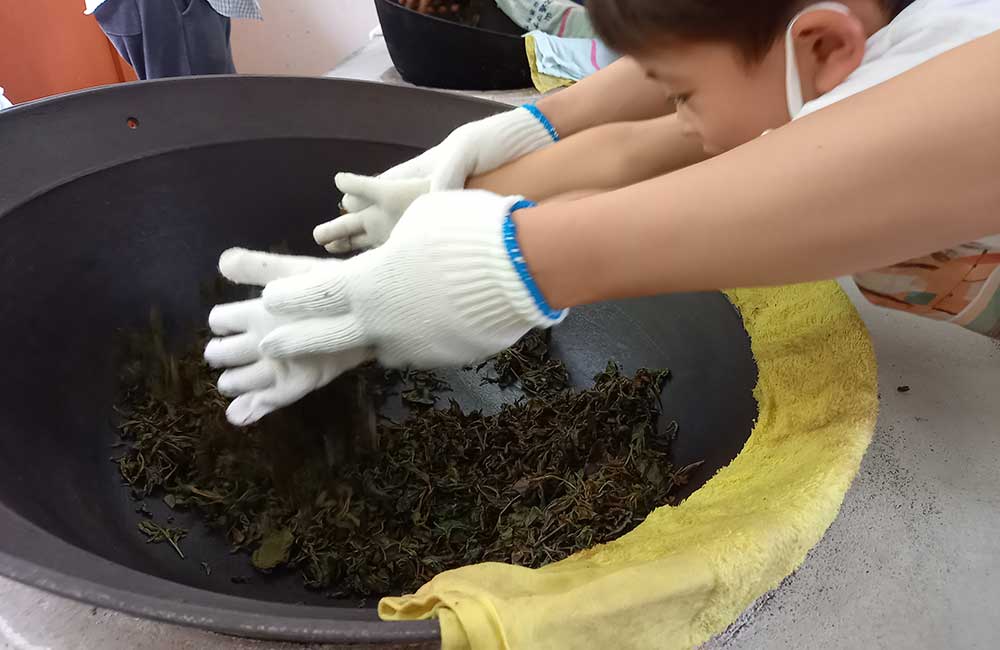
This process took about an hour! Using fire made us sweat even more, but gradually tea aroma started to waft through the air, making us feel like we were in a tea shop. However, the smell at this time was more like green tea than black tea.

The hour-long tea drying process was indeed hard work for children... so while the adults were roasting the tea leaves, the children drew on the packages. It would be super exciting to take home the finished tea in our own designed pouches!
Tasting
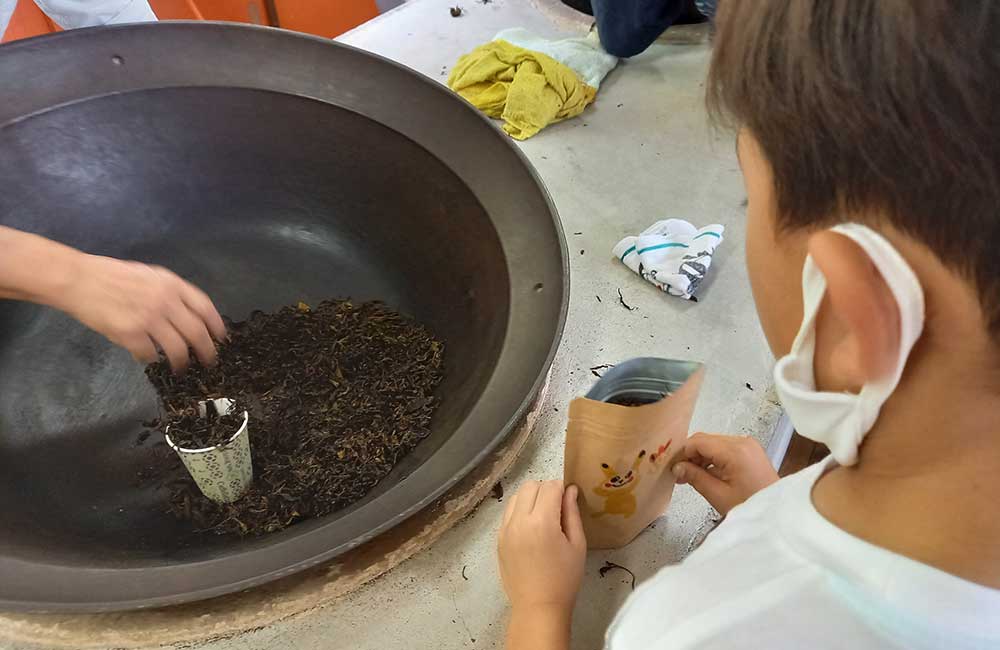
Now, let’s drink the finished product. I wondered if it really tasted like black tea. I skeptically tried it, but WOW, it’s really black tea! It didn't smell like it when it was being roasted, but when I drank it, it WAS black tea. I was impressed! Without bitterness, it had such a mild additive-free taste with a hint of sweetness that even kids could drink without sugar or milk!
For your information, the black tea made from Japanese-grown tea leaves is specially called Wakocha, meaning Japanese black tea.
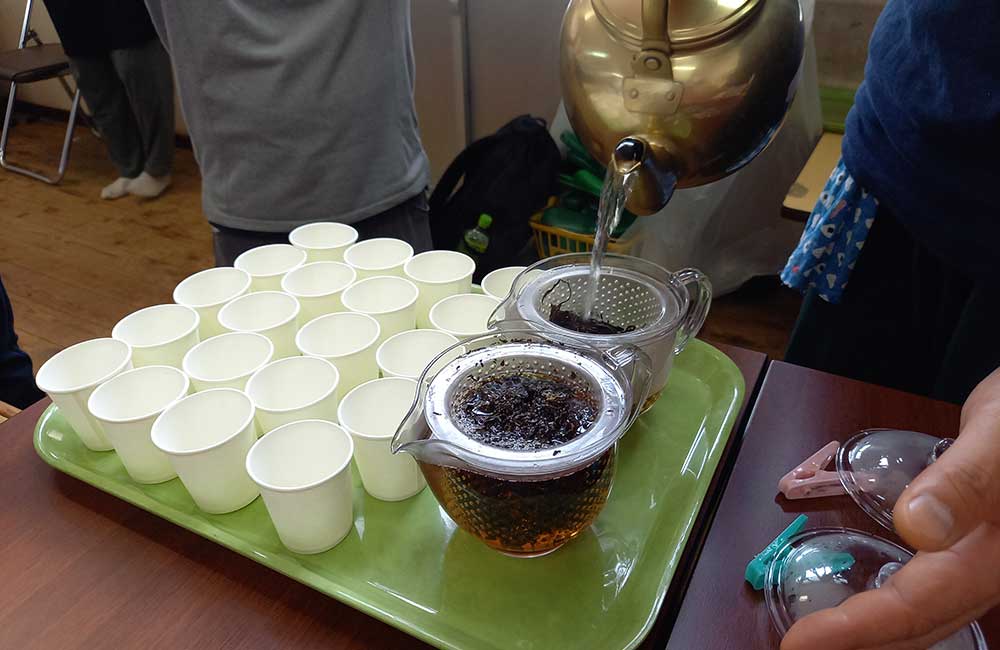
By the way, how do you think the taste competition between the 2 teams went? My team agreed that ours tasted a lot better. Well, it’s natural you love your own work because you put so much effort into it.
During the tasting time, we had a relaxing time after all the hard work. Tea cookies and tea candies were served along with the tea. The cookies are sold at Hanakobo in the village, but the candies were still under development at that time. Hopefully, they will have been launched when you are reading this post. The children seemed to be very satisfied, and when I asked my son how this workshop was, he replied, “It was great fun.” He was very happy.
These days, I don’t think many people make their tea by brewing tea leaves in a teapot. Many children might think tea comes in tea bags or even in plastic bottles. I hope my son learned that tea is made with great care and how delicious properly made tea can be.

Kasuga Garden is a facility that used to be a nursery school, where you can enjoy a variety of seasonal experiences unique to the countryside. In addition to the tea-making workshops, they offer sweet potato-harvesting experiences in autumn and Shimenawa (Shinto wreath) making in winter.
The tea harvested and processed here is sold as “Wakocha of Yamazoe Village.” For the store locations, see the bottom of this page.
It’s all for now. See you soon!
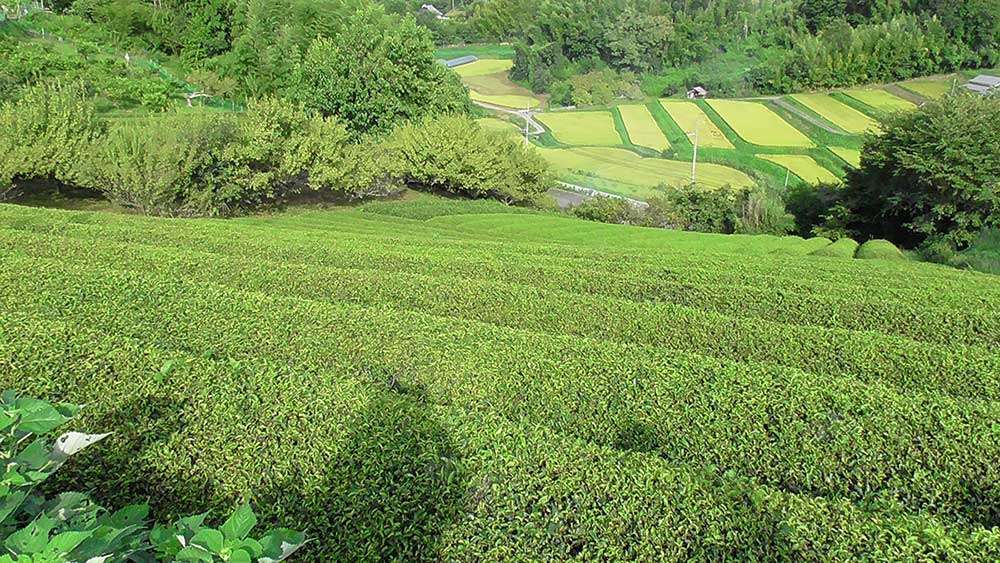
- Kasuga Garden
- Location: 704-1 Kasuga, Yamazoe Village, Yamabe-gun, Nara Prefecture
- All the events are required reservations. Check out the event information on the official Facebook Page or contact us.
- You can purchase “Wakocha of Yamazoe Village” at:
- Yamazoe Village Hall, Community Development Section (Yamazoe Village, Nara)
- Midoriya (Yamazoe Village, Nara)
- Okamori Bookstore (TSUTAYA Ueno) (Iga City, Mie)
- Rest area “Michi-no-Eki, Totsukawa-go” (Totsukawa Village, Nara)
- Kintetsu Department Store, Nara (Nara City, Nara)
- Kintetsu Department Online Store



